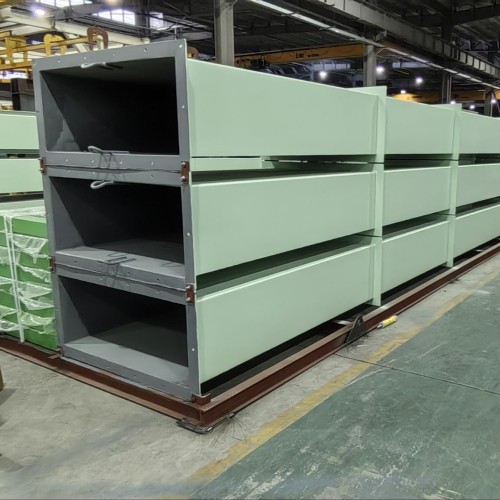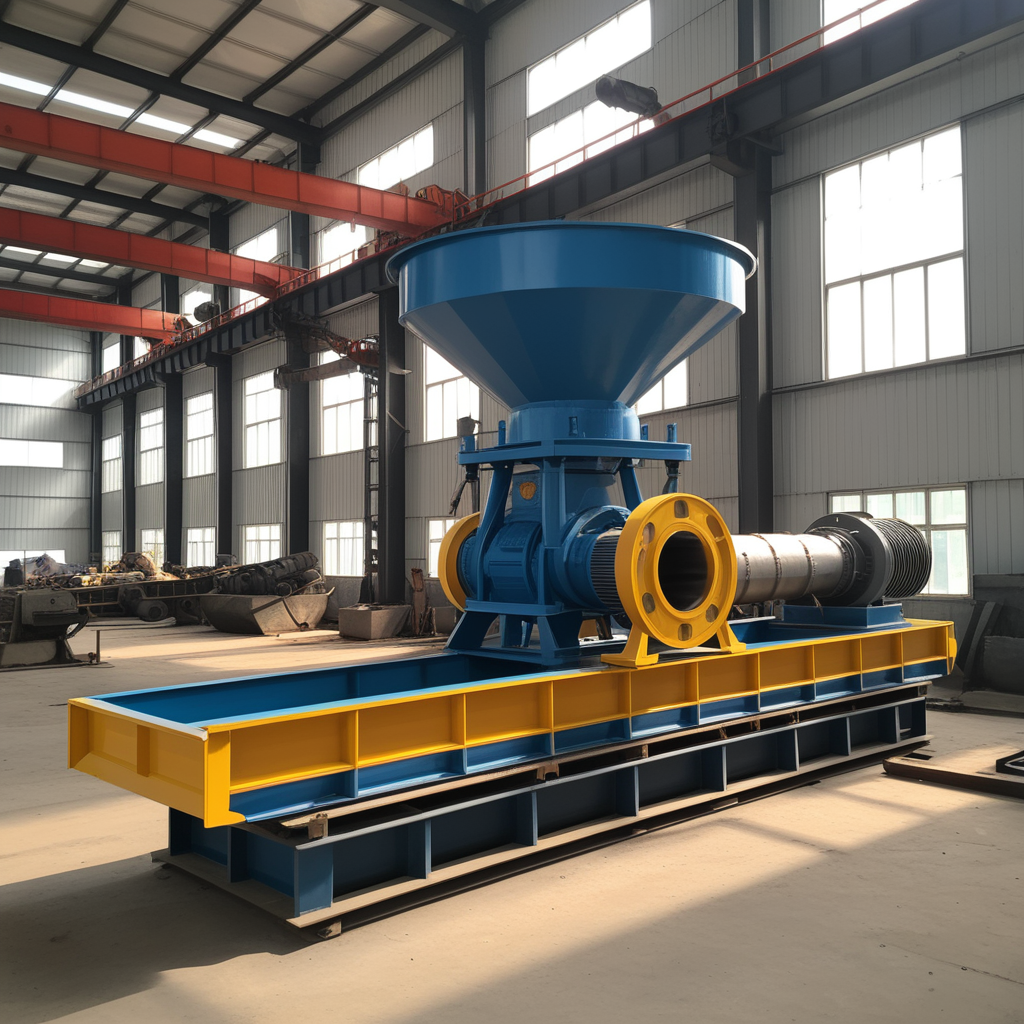
Submerged Chain Conveyor System (SCC System)
The Submerged Chain Conveyor (SCC) System is an industrial material handling system designed to efficiently transport materials, typically in high-temperature and highly abrasive environments. It is commonly used in power plants, waste-to-energy (WTE) plants, and cement plants for handling ash, slag, or other byproducts of combustion.
Key Features of the Submerged Chain Conveyor System:
- Design and Operation:
- Submerged Chain Design: The system consists of heavy-duty, heat-resistant chains running through a water bath or submerged area, where the material being transported is kept submerged in water or coolant. This helps in cooling down the hot material and also reduces dust and particulate emissions during transportation.
- Water-Cooled Operation: The submerged area serves a dual purpose – cooling the transported materials (such as hot ash or slag) and reducing the risk of fires or excessive heat buildup. It also provides a way to control the temperature of the material before it reaches downstream processing or storage areas.
- Conveyor Chain: The conveyor features a series of interconnected chains, often made from materials like stainless steel or heat-resistant alloys, that move the material along the conveyor system. The chain moves over sprockets and is supported by a series of rollers to ensure smooth operation.
- Materials Handled:
- Ash Handling: The SCC system is commonly used for bottom ash or fly ash in power plants and waste-to-energy plants. It is effective for handling large volumes of ash that are produced in the combustion process.
- Slag Handling: In industries such as steel production or cement manufacturing, SCC systems can be used to move slag, a byproduct of melting and refining processes.
- Other Hot Byproducts: SCCs are also suitable for handling other hot materials, including molten metal and other byproducts generated in various high-temperature industrial processes.
- Advantages of SCC Systems:
- Effective Cooling and Dust Control: The submerged environment provides both cooling for hot materials and dust suppression, which helps in maintaining environmental standards and ensuring safer operations.
- Low Maintenance: Since the system is submerged and cooled, it tends to have fewer issues related to wear and tear due to the reduced exposure to extreme temperatures and abrasion.
- Continuous Operation: The SCC system can transport materials continuously, which is ideal for industries that need to handle large quantities of byproducts over extended periods.
- Energy Efficiency: By utilizing the submerged design, the SCC system can reduce energy consumption by preventing excessive wear and tear on mechanical components and limiting the amount of cooling needed for the materials.
- Components of the SCC System:
- Conveyor Chain: As mentioned, the conveyor consists of a heavy-duty chain, often made of high-strength steel, which is designed to withstand the heat and abrasiveness of the materials being transported.
- Submerged Trough or Channel: The chain runs through a trough that is filled with water or another cooling medium to submerge the materials. This also helps maintain the required environmental conditions, such as dust suppression and temperature regulation.
- Drive and Tensioning Mechanism: The system is driven by a motor that rotates the chains, with tensioning mechanisms to ensure the chains move smoothly and at the correct speed.
- Pulleys and Sprockets: The chain moves around pulleys or sprockets that guide the material along the system. These components are critical for controlling the movement and direction of the chain.
- Discharge Hopper: The system usually has a discharge hopper or container at the end, where the ash or slag is deposited. This is where the material is unloaded for further processing or disposal.
- Applications:
- Power Generation: In coal-fired and waste-to-energy power plants, the SCC system is widely used for bottom ash handling. The system collects the hot ash from the boiler or furnace and transports it to a cooling area or storage bin.
- Steel and Cement Industries: The SCC system is also useful for slag handling in steel mills and cement plants, where molten slag is cooled and transported via a submerged chain conveyor.
- Incineration Facilities: WTE facilities commonly use SCCs for handling the ash produced during the incineration of municipal waste. The cooled ash is safely transported to storage or processing areas.
- Metallurgical Industries: In the steel industry, SCCs can be used to handle hot byproducts like slag, providing an efficient way to manage waste materials.
- Safety Features:
- Temperature Monitoring: Continuous monitoring of the material temperature is crucial to ensure that the system can handle the high heat without compromising safety. Temperature sensors are usually installed along the conveyor.
- Water Level Control: For proper cooling, it is essential to maintain the right water level in the submerged trough. Water level sensors and control valves are used to regulate this.
- Fire Protection: The submerged design inherently reduces the risk of fires, but additional fire suppression systems are often included as an added precaution.
Maintenance Considerations:
- Regular Inspection: Like all conveyor systems, SCCs require regular inspection of the chains, sprockets, and other moving parts to ensure smooth operation.
- Water Quality: The water or coolant used in the submerged area must be regularly maintained to prevent clogging or contamination of the system, especially if it is in contact with fine particulates like ash or slag.
- Chain Lubrication: To maintain the efficiency and longevity of the conveyor, the chains need to be properly lubricated to prevent corrosion and excessive wear.
Conclusion:
The Submerged Chain Conveyor System (SCC) is an effective and reliable solution for handling high-temperature, abrasive materials like ash and slag in various industries. Its ability to cool materials while reducing dust and preventing fires makes it an excellent choice for power plants, steel mills, and waste-to-energy facilities. Proper maintenance and monitoring are crucial to ensuring its long-term performance and safety.






